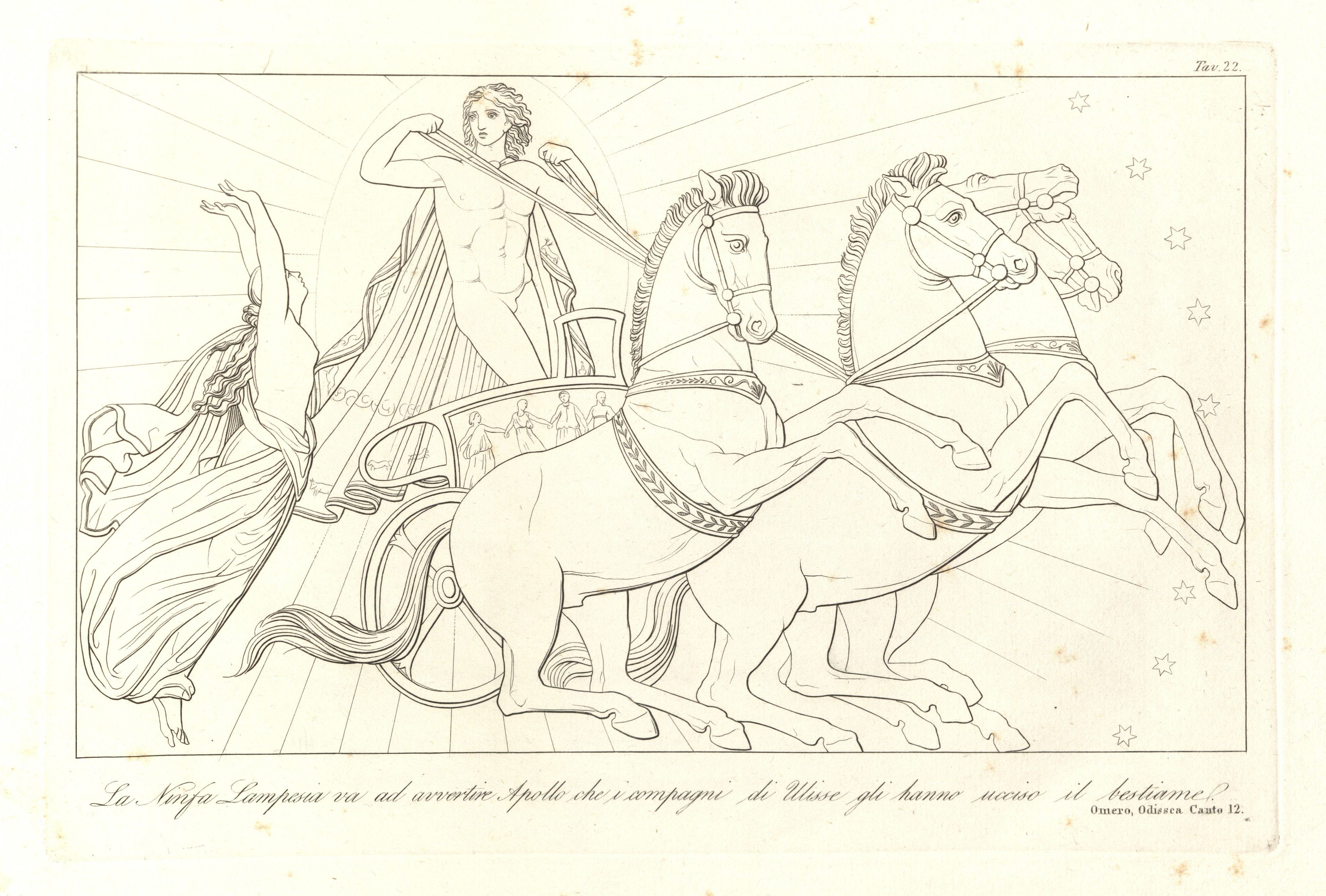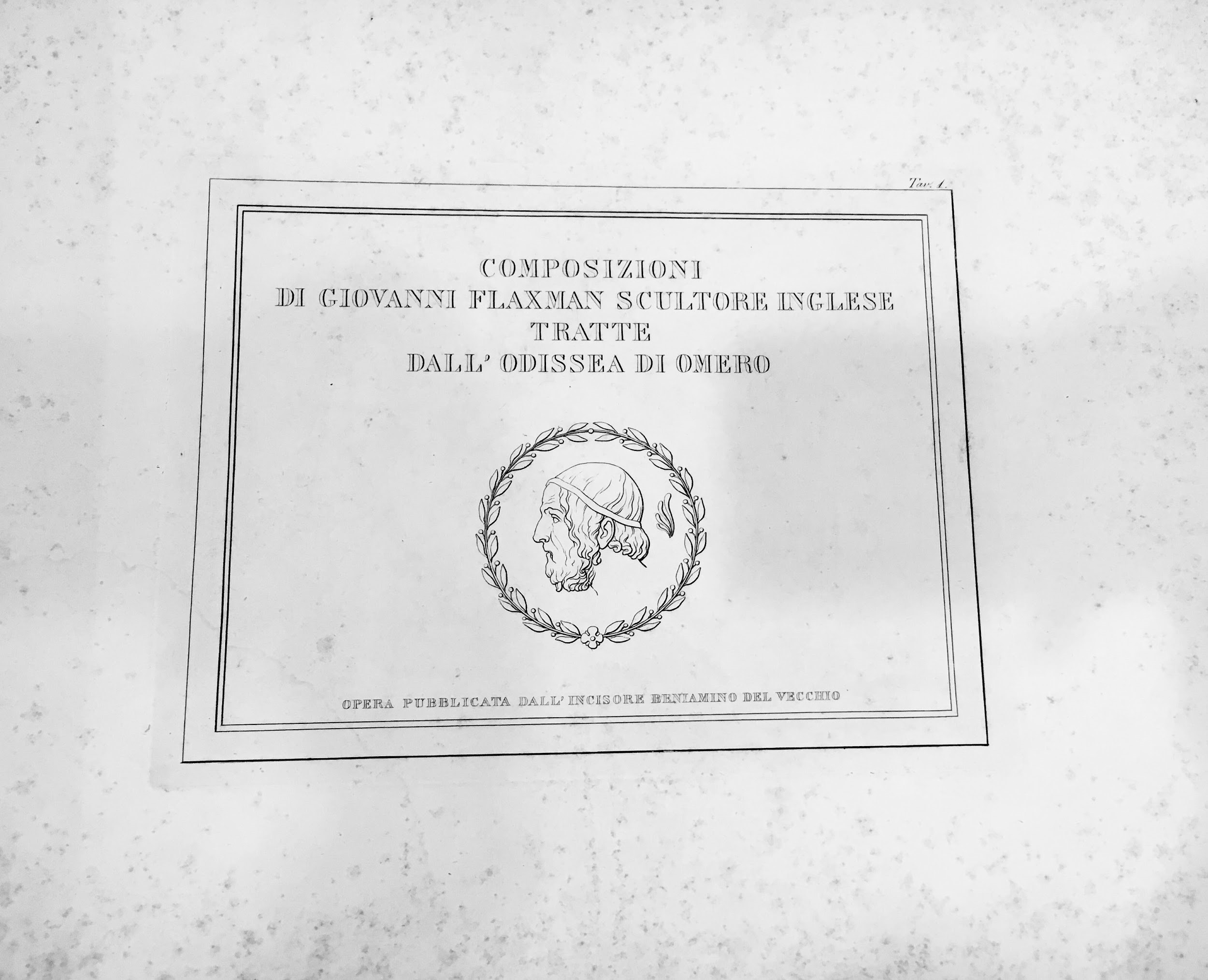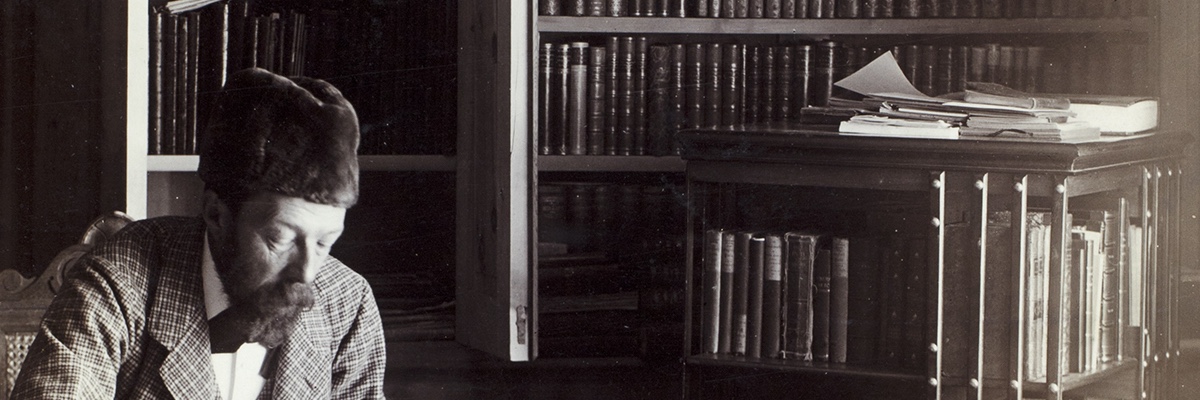John Addington Symonds was familiar with Greek myth and indulged a particular affection for its visual depiction. He had access to a multitude of books in his family’s home but reveals that he spent much time in his youth with European books of images and mentions John Flaxman specifically. Symonds writes, “I was very fond of picture books and drew a great deal from Raphael, Flaxman and Retzsch. Our house was well stocked with engravings, photographs, copies of Italian pictures and illustrated works upon Greek sculpture” (Memoirs, 118). Composizioni di Giovanni Flaxman Scultore Inglese Tratte Dall’Odissea di Omero (Compositions of John Flaxman, English Sculptor, Regarding the Odyssey of Homer) is a likely candidate given that it is an European picture book with multiple images of Apollo, for whom Symonds expressed an interest. The book, with engravings by Beniamino del Vecchio, was published in Italian in 1805. John Addington Symonds Senior was born in 1807 and his son in 1840. The book, or a similar edition, easily could have been purchased by Symonds senior and would not have been too old for Symonds junior to enjoy in his youth. The publication date, paired with Symonds’ explicitly stated interest in the subject, makes it a plausible candidate for either Symonds to own, though it should be noted that Flaxman’s illustrations were frequently printed, both on their own and in editions of the works they illustrate. The 1805 book has thirty-five plates depicting various scenes from the Odyssey. But there is one specific image of Apollo that, given his tastes, would surely have struck the young Symonds.
Symonds makes clear his affection for Apollo. He spent many walks and daydreams dwelling on the deity. He recalls this in the third chapter of the Memoirs,
“The kernel of my inspiration was that radiant figure of the young Apollo… A luminous haze of yearning emotion surrounded the god. His divine beauty penetrated my soul and marrow. I stretched out my arms to him in worship. It was I alone who knew him to be Olympian; and I loved him…” (114).

Symonds is obviously enchanted by Apollo and his myths. Given his deep infatuation, it is reasonable that the youth examined a multitude of images of his love. In Flaxman’s book there is a plate entitled, La Ninfa Lampesia va ad avvertire Apollo che i compagni di Ulisse gli hanno ucciso il bestiame. This translates to: The Nymph Lampesia goes to Apollo to warn him that the companions of Ulysses killed his cattle. In the Odyssey the deity from this tale is Helios who can be used interchangeably with Apollo since both are sun gods. ¹
Symonds might have been drawn to this image in particular because it shows the god as an idealized, youthful nude flying through the sky on a glorious chariot. It is clear that Symonds would have spent time with nearly any image of Apollo, but this one is especially interesting because of the second figure in the plate. Apollo’s image is accompanied by the partially nude female figure of Lampesia. In his Memoirs, Symonds records that his father commented to him regarding what piqued his visual interest,
“I used to pore for hours together over the divine loveliness, while my father read poetry aloud to us in the evenings. He did not quite approve, and asked me why I would not choose some other statue [than the Praxitelean Cupid], a nymph or Hebe” (118).
This plate would afford Symonds the opportunity to compare Apollo with a feminine being, perhaps quieting his father. Given Symonds infatuation with Apollo it seems obvious that if he had access to this specific plate he would have adored this image of the glorious and beautiful deity.

¹ Burkert, Walter. Greek Religion. Cambridge, Mass.: Harvard University Press, 1985, p. 120. https://catalyst.library.jhu.edu/catalog/bib_634129
Works Cited:
Burkert, Walter. Greek Religion. Cambridge, Mass.: Harvard University Press, 1985.
Composizioni di Giovanni Flaxman Scultore Inglese Tratte Dall’Odissea di Omero designed by John Flaxman, engraved by Beniamino del Vecchio. Published 1805. https://catalyst.library.jhu.edu/catalog/bib_537161

